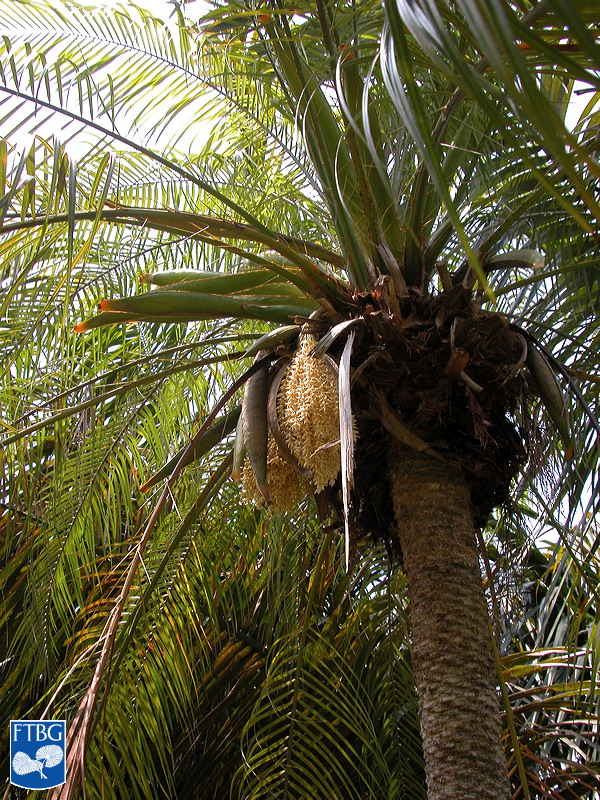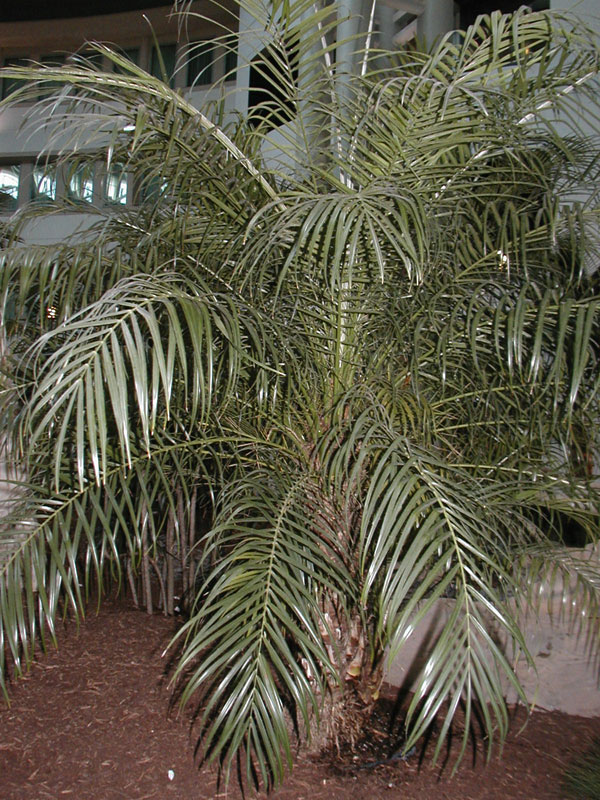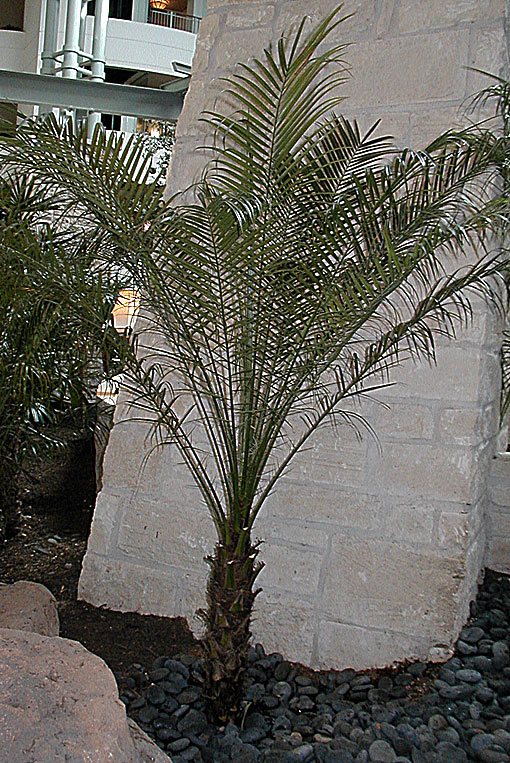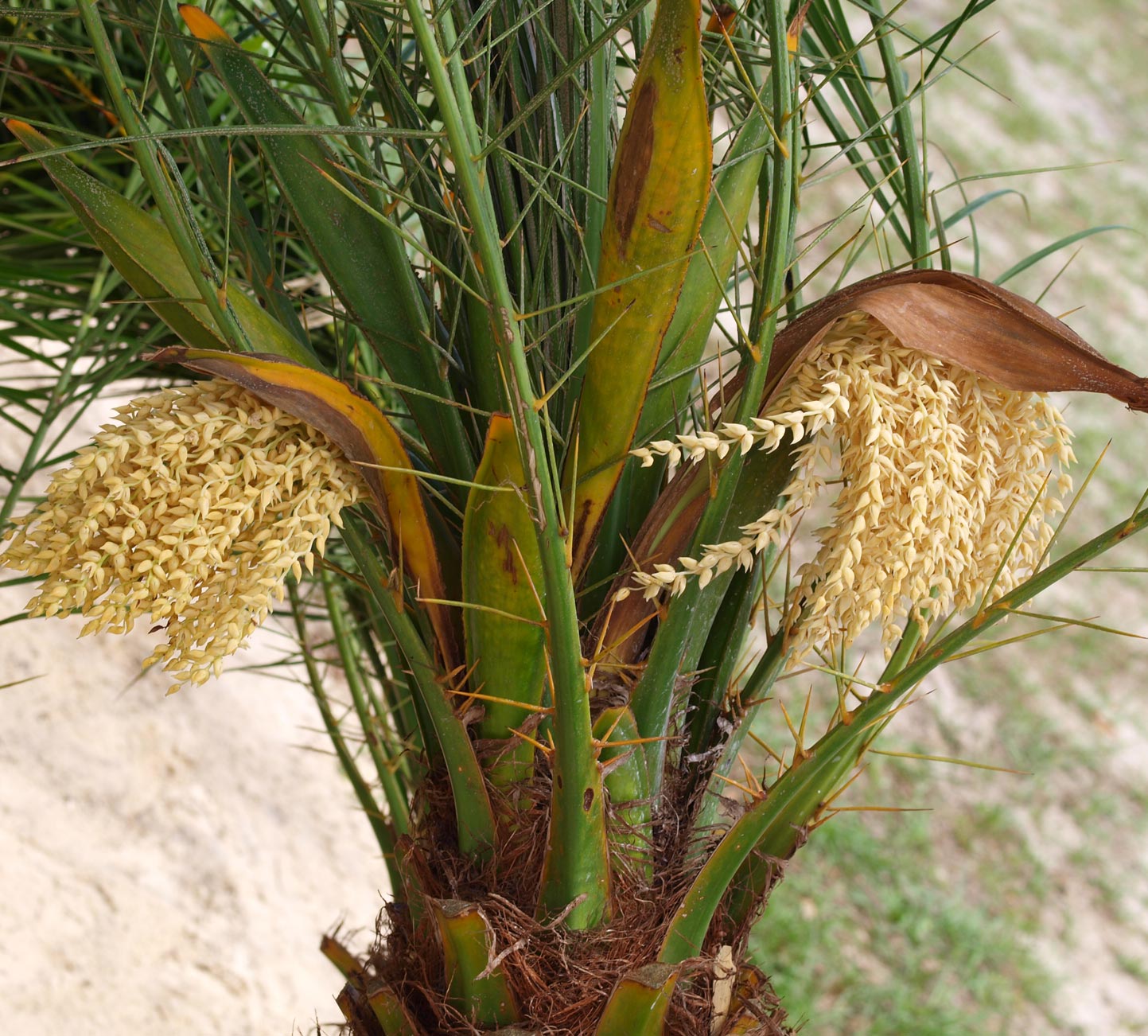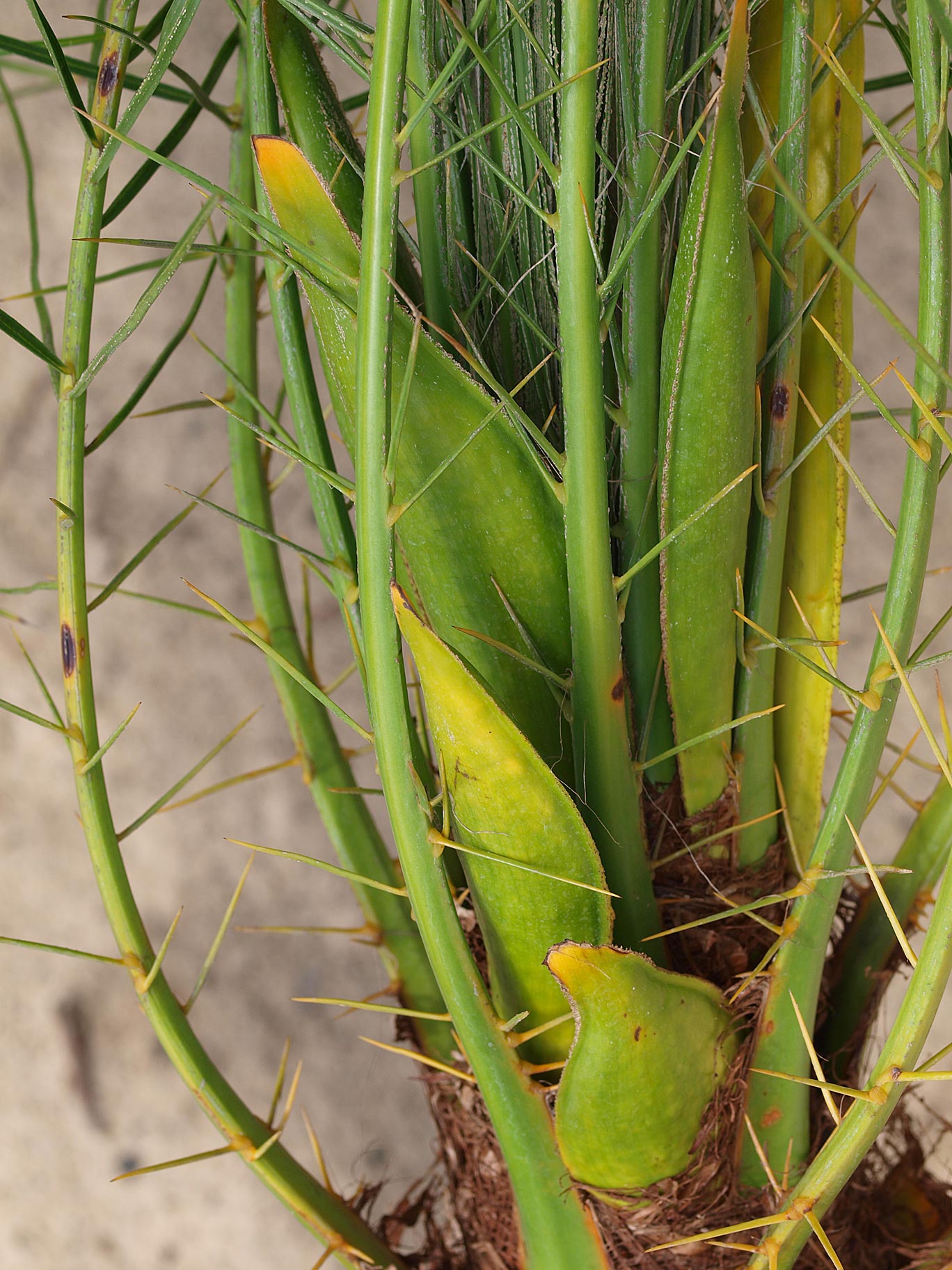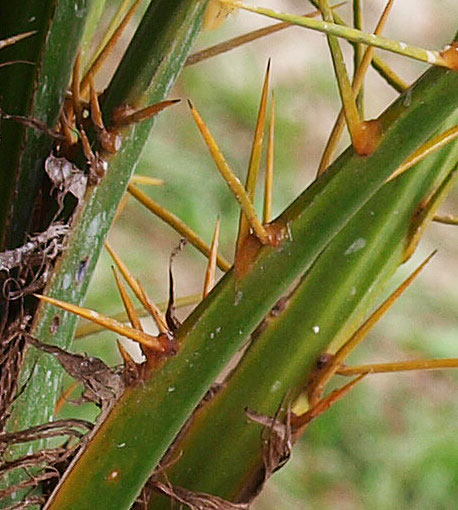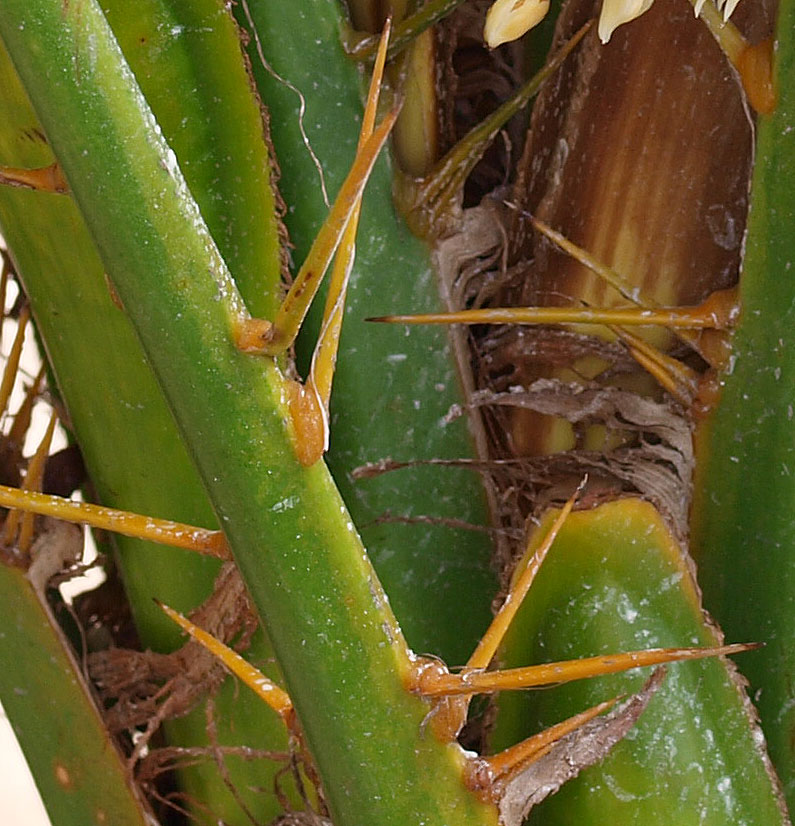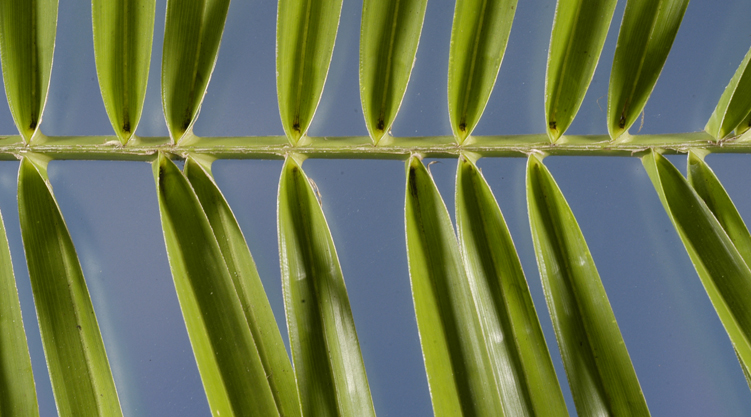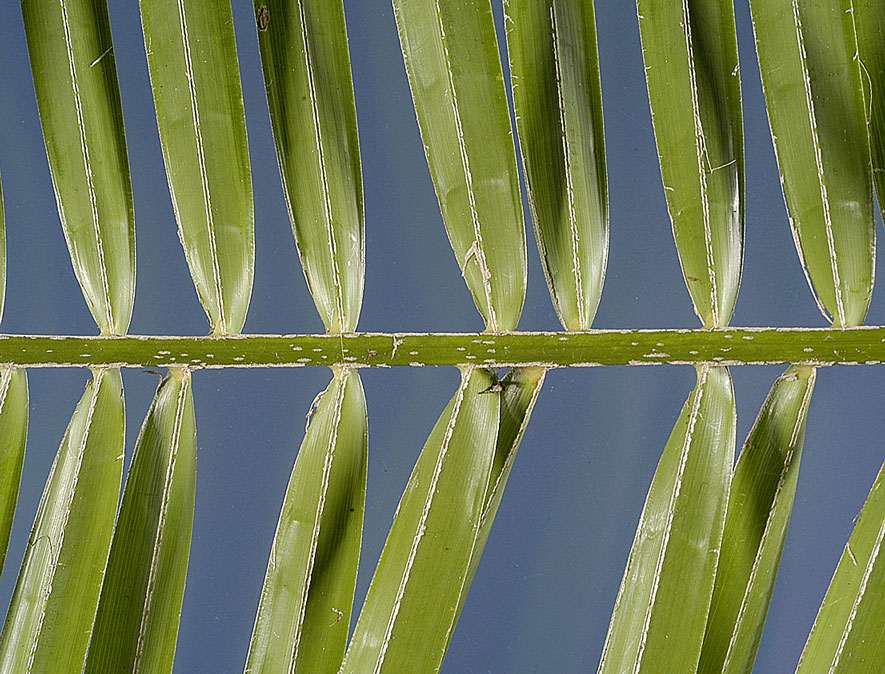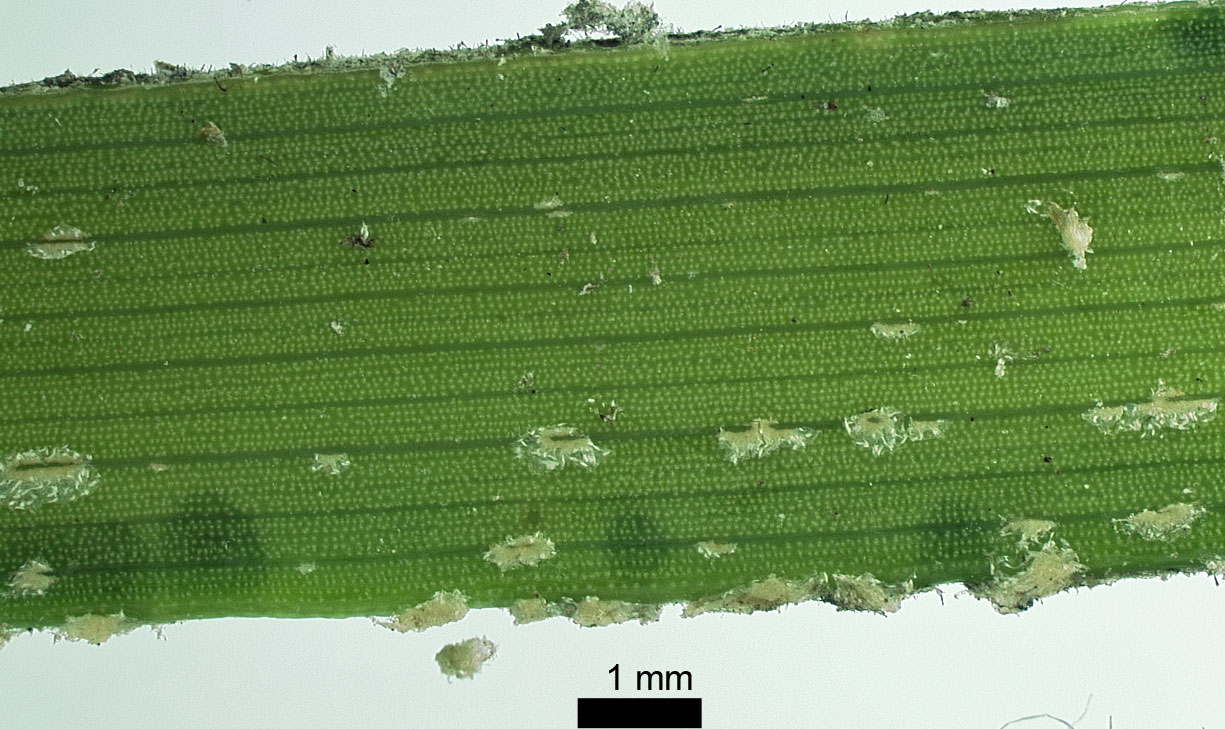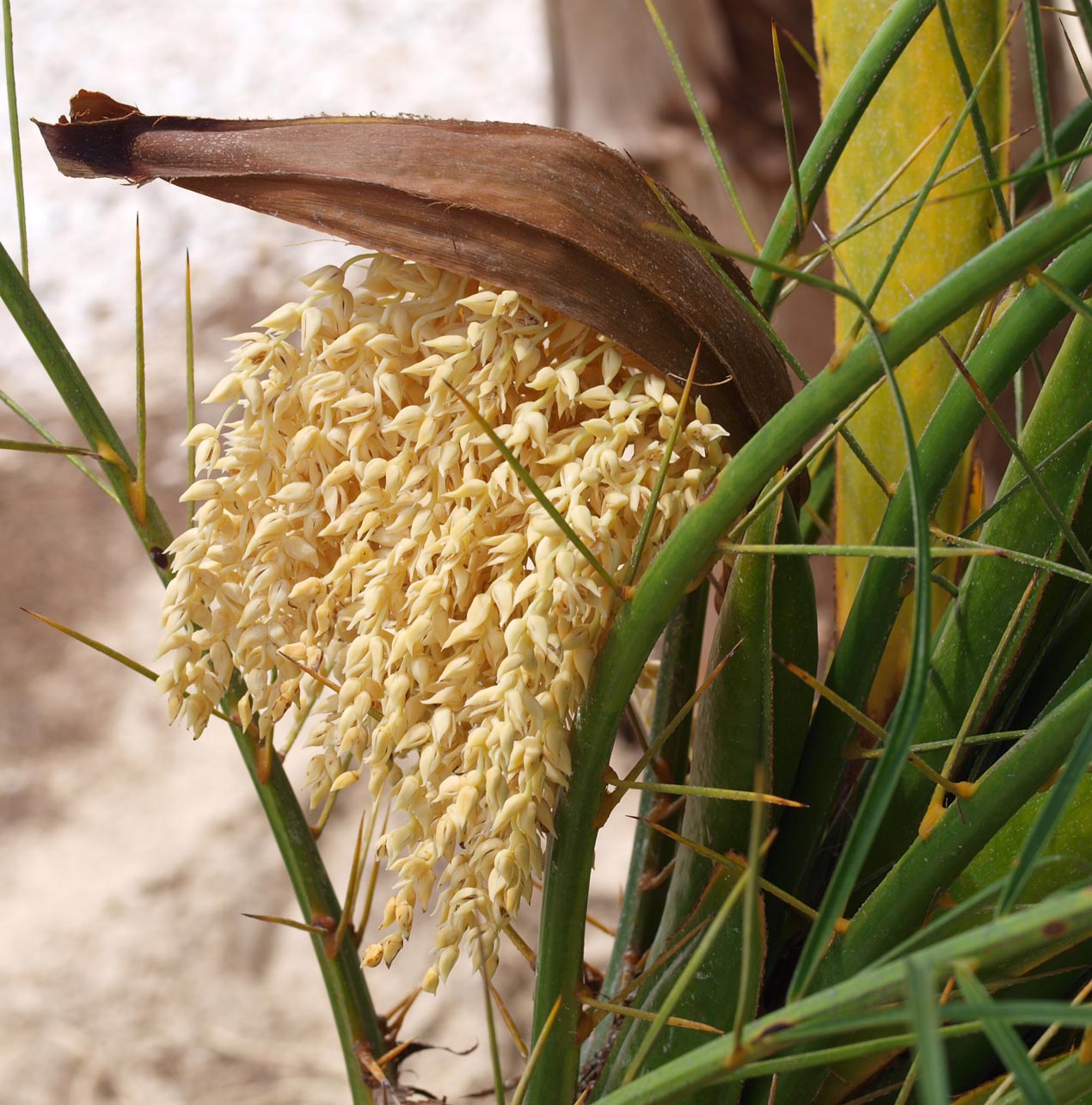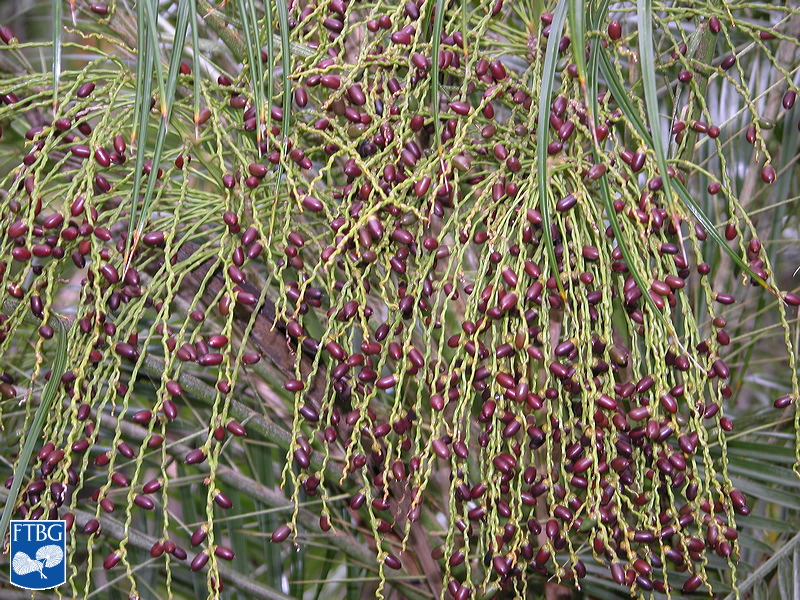Phoenix roebelenii
|
Phoenix roebelenii older individual with stem and leaf canopy. Photograph courtesy of Fairchild Tropical Botanical Garden, Guide to Palms http://palmguide.org/index.php |
|
Phoenix roebelenii young, indoor plant,with stem and leaf canopy. |
|
Phoenix roebelenii young, indoor plant,with stem and highly pruned leaf canopy.
|
|
Phoenix roebelenii tip of stem with leaf bases and inflorescences |
|
Phoenix roebelenii with immature inflorescence |
|
Phoenix roebelenii leaf spines |
|
Phoenix roebelenii closer view of leaf spines |
|
Phoenix roebelenii leaflets (adaxial surface) |
|
Phoenix roebelenii leaflets (abaxial surface) |
|
Phoenix roebelenii closer view of leaflet with scurf |
|
Phoenix roebelenii flowers |
|
Phoenix roebelenii fruit. Photograph courtesy of Fairchild Tropical Botanical Garden, Guide to Palms http://palmguide.org/index.php |
Common name
pygmy date palm, dwarf date palm
Description
Stems: Solitary, the smallest of the Phoenix palms, erect to 3 m tall and 8 cm in diameter near the base where spirals of fallen, woody leafleaf:
in palms -- the leaf blade (which is usually divided into leaflets or leaf segments), the petiole (or leaf stalk) and the sheath (which forms the attachment of the leaf to the stem)
bases mark the stem; bulging at the top of the stem with old, triangular leafleaf:
in palms -- the leaf blade (which is usually divided into leaflets or leaf segments), the petiole (or leaf stalk) and the sheath (which forms the attachment of the leaf to the stem)
bases and matted fibers to 20 cm in diameter. Wild individuals are sometimes clustering, but those in cultivation are almost exclusively solitary. Leaves: Pinnatepinnate:
like a feather; palms with pinnate leaves usually have compound leaflets attached to a rachis, although a pinnate leaf may be entire with pinnate veins (e.g., <em>Chamaedorea metallica</em>)
, induplicateinduplicate:
Most palm leaflets or leaf segments are obviously folded. If the folds create a V-shape, with the midrib lower than the margins (so that rain might fall "into a valley"), the folding is induplicate.
, 2-3 m long, with a graceful, arching rachisrachis:
an extension of the petiole through the blade of a pinnate leaf to which leaflets are attached
which ends in a single leaflet; many narrow, pendant, deep green leaflets with white scurfscurf:
bran-like scales (found on <em>Phoenix roebelenii</em> leaves, for example)
on the leaflets, arranged in a single plane and evenly spaced; the lowermost leaflets (along the short petiole) are modified into sharp, thin spines; and no crown shaftcrown shaft:
a cylinder of clasping leaf sheaths toward the apex of the stem, found in some pinnate-leaved palms (e.g., <em>Wodyetia bifurcata</em>)
is formed. Flowers and fruit: Inflorescences to 75 cm long, and branched to one order. Cream-colored staminatestaminate:
a flower bearing stamens but no pistils; a “male” flower
and pistillatepistillate:
a flower bearing a pistil but no stamens; a “female” flower
flowers are produced on different plants. Fruits are up to 1-2 cm long, ovoid, and black when ripe.
Diagnostic features
Field: Solitary, dwarf palm with pinnatepinnate:
like a feather; palms with pinnate leaves usually have compound leaflets attached to a rachis, although a pinnate leaf may be entire with pinnate veins (e.g., <em>Chamaedorea metallica</em>)
, induplicateinduplicate:
Most palm leaflets or leaf segments are obviously folded. If the folds create a V-shape, with the midrib lower than the margins (so that rain might fall "into a valley"), the folding is induplicate.
leaves 2-3 m long, with a graceful, arching rachisrachis:
an extension of the petiole through the blade of a pinnate leaf to which leaflets are attached
which ends in a single leaflet; many narrow, pendant, deep green leaflets with white scurfscurf:
bran-like scales (found on <em>Phoenix roebelenii</em> leaves, for example)
, arranged in a single plane; the lowermost leaflets (along the short petiole) are modified into sharp, thin spines.
May be confused with
Other Phoenix species, if only a leafleaf:
in palms -- the leaf blade (which is usually divided into leaflets or leaf segments), the petiole (or leaf stalk) and the sheath (which forms the attachment of the leaf to the stem)
or a few leaflets are available, but the size of the palm and the white scurfscurf:
bran-like scales (found on <em>Phoenix roebelenii</em> leaves, for example)
on the leaflets are distinctive
Distribution
Native to Southeast Asia, found along rivers
Additional comments
Because Phoenix species can hybridize easily and produce fertile crosses, determining the species within this genus might not be possible. P. roebelenii is a common indoor palm.
Scientific name
Phoenix roebelenii O'Brien
Family
Arecaceae/Palmae


